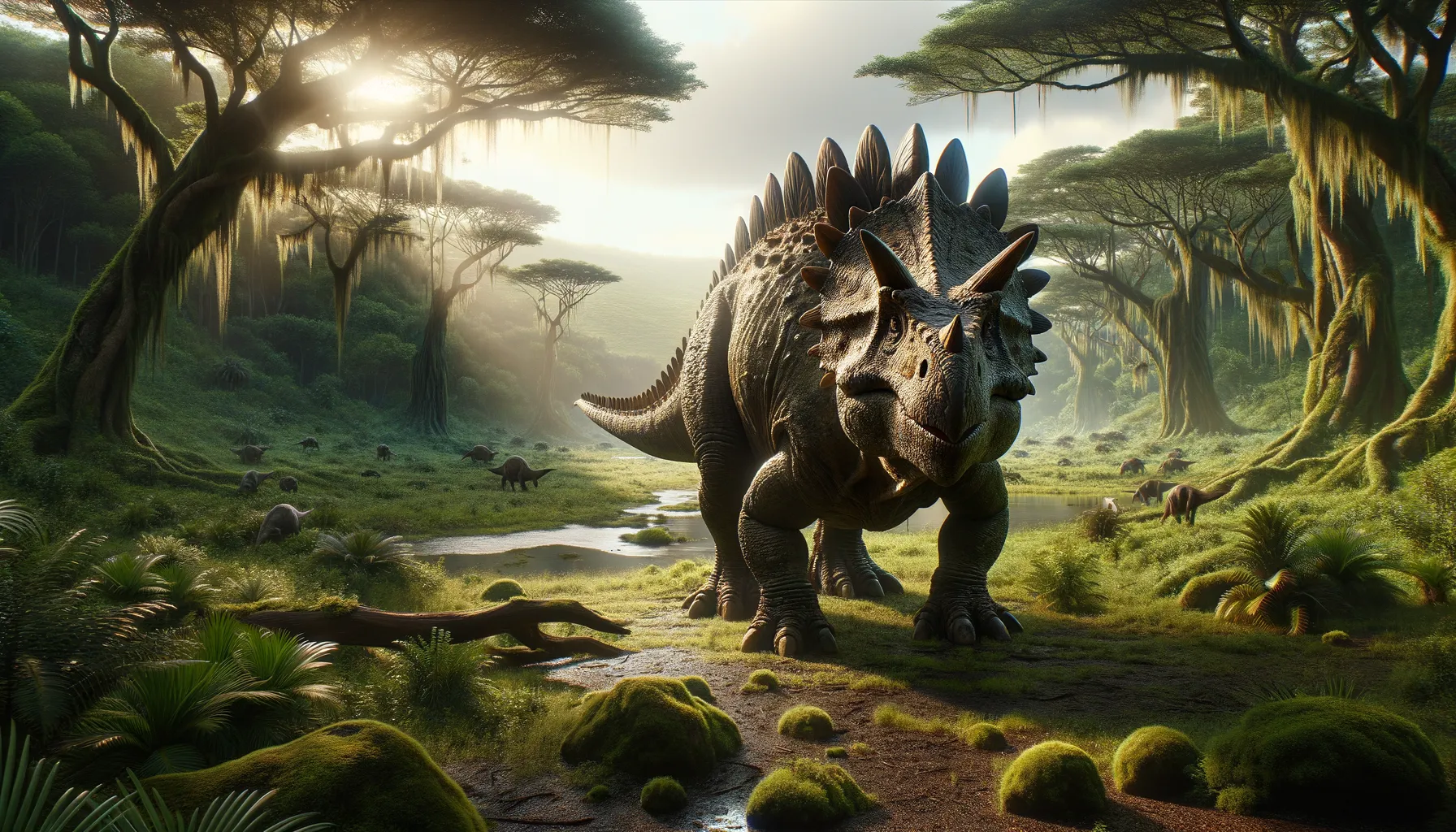
Ankylosaurus
Nature's ancient armored tank.
Period
Cretaceous
Length
Measured around 6 to 8 meters (20 to 26 feet) long.
Height
Stood about 1.7 meters (5.6 feet) tall.
Weight
Weighed up to 8,000 kilograms (17,600 pounds).
Ankylosaurus was a heavily armored dinosaur known for its tank-like body and clubbed tail. It thrived during the late Cretaceous period, showcasing impressive defenses against predators. Despite its size, this herbivore had relatively small teeth, indicating a diet primarily consisting of vegetation. Its sturdy build and protective bony plates made it a formidable creature of its time.
Diet
Ankylosaurus was a herbivore, primarily feeding on low-lying plants. It used its beak-like mouth to crop vegetation and had small, leaf-shaped teeth suited for grinding.
Hunting
Being a herbivore, Ankylosaurus did not hunt. Instead, it foraged for plants and may have used its tail club defensively against predators.
Environmental challenges
Living in a time with large predators like Tyrannosaurus rex, Ankylosaurus faced the constant threat of predation. Its heavy armor and defensive tail were crucial for survival. Climate changes might have also affected its food sources, requiring adaptation to varying vegetation availability.
Speed
Slow-moving due to its heavy armor.
Lifespan
Estimated to be several decades long.
First discovery
First discovered in 1906 in Montana, USA.
Fun Facts
- Ankylosaurus was one of the last dinosaurs to roam the Earth, living around 68 to 66 million years ago.
- It is best known for its incredible armor, which included large bony plates and studs covering its body.
- Ankylosaurus had a massive club at the end of its tail, which it used for defense against predators like the T. rex.
- Despite its fierce appearance, Ankylosaurus was a herbivore, feeding on low-growing plants and ferns.
- This dinosaur was quite large, measuring up to 20 feet long and weighing around 4-6 tons.
- Ankylosaurus had a broad, squat build and moved slowly, likely relying on its armor and tail club for protection rather than outrunning threats.
Growth and Development
Ankylosaurus likely grew slowly, reaching its massive size over several years. Juveniles would have been more vulnerable, relying on their developing armor for protection. As it matured, its bony plates and tail club would have fully developed, offering increased defense.
Habitat
Ankylosaurus inhabited forested areas and open plains in what is now North America. It likely favored regions with abundant vegetation to support its herbivorous diet. It might have also frequented wetland areas where plants were more lush and accessible.
Interaction with other species
Ankylosaurus coexisted with large carnivores, necessitating a strong defensive strategy. It likely had minimal aggressive interaction with other herbivores, focusing instead on avoiding predators. Fossil evidence doesn't indicate social behavior, but they might have been solitary or lived in loosely organized groups.
Natural lifespan
Ankylosaurus likely lived for several decades if it reached adulthood.
Reproduction
Ankylosaurus likely laid eggs, as with other dinosaurs. Nesting behaviors remain speculative, but it might have buried eggs in earthen nests. Hatchlings would have been vulnerable until their armor developed.
Social behaviour
There is little evidence of Ankylosaurus having complex social structures. They may have been solitary, but occasional grouping might have provided protection. Communication could have been limited, using simple sounds or body movements.
Fossil locations
Ankylosaurus fossils have been primarily found in the western United States, particularly in Montana. Additional fossils have been discovered in Alberta, Canada, providing insights into its geographical range.
